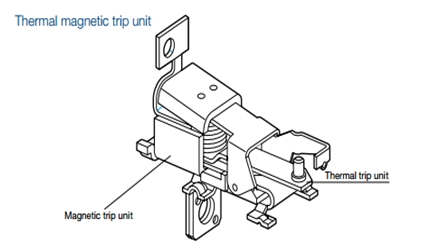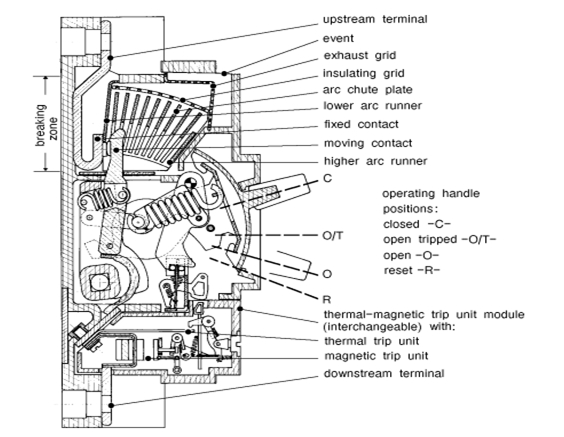Check the fifth part of Nasir’s tutorial on Circuit Breakers:
One of the major classifications of circuit breakers is based on the voltage levels they operate on. On this basis we classify the circuit breakers into two main types, which are:
- High Voltage Circuit Breakers
- Low Voltage Circuit Breakers
Voltage Threshold
In this article I am going to discuss the Low Voltage circuit breakers. So the first question which arises is that why are the low voltage circuit breakers known so? This is because they operate on low voltages, and the threshold voltage for their classification is 1000 volts.
The circuit breakers which operate on voltages less than 1000 volts are known as low voltage circuit breakers. On the other hand, high voltage circuit breakers are completely opposite to them which will be discussed further in the next articles.
Low voltage circuit breakers are shown in the figure below:
Types of Trip units used
This was all about the operating characteristics of the low voltage breakers. Now if we come to their function, they perform the same function as the normal breakers, i.e. acting as a safety device to prevent the excessive flow of current in the circuit. These are mostly used for domestic purposes in homes and other such buildings to prevent large current from damaging the circuitry and causing fire or other devastating results.
The actuating signal for the opening and closing of the contacts of the breaker is provided by a trip unit which actuates the release mechanism of the contacts and allows their opening and closing, depending upon the amount of current flowing through it. In low voltage circuit breakers, two types of trip units are majorly used which are the thermal magnetic trip unit and the Electronic trip unit.
A thermal magnetic trip unit is shown in the figure below:
Physical construction
To analyze a low voltage circuit breaker in detail, its mechanical structure must be well known before coming to its functions which are precisely more or less the same as that of normal circuit breakers.
So the cross section of a Low voltage circuit breaker is shown in the figure below:
Function of low Voltage Circuit Breakers
They conduct the flow of current as long as a nominal value of current is flowing through the circuit to the load attached to it. Even at the slightest contact, current conduction occurs.
But as soon as the breaker senses an excessively large amount which does not lie in its operating range (which can be checked through the ratings of the circuit breaker), the trip unit actuates the bimetallic strip and the contact breaks and immediately further flow of current is stopped. This was its simple function.
In addition to the safety operation, it also provides a kind of voltage insulation to the circuit and retains the flow after the current retains its appropriate value.
So these were the majors of low voltage circuit breakers. I hope that it is clear now that why they are named so and their construction, working and functionality is also clear.
In the same way we are going to discuss the High Voltage circuit breakers in detail in the next article. So stay tuned and keep updated to know more about the types of circuit breakers in detail.
Nasir.



use of sf6 in low voltage and its advantage against corrosion and atmosphiric effect.